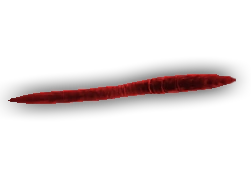

In 1969, Max Delbrück, Alfred Hershey, and Salvador Luria were awarded the Nobel Prize in Physiology or Medicine for their discoveries of the replication of viruses and their genetic structure. In 1919, in Paris, France, d'Hérelle conducted the first clinical application of a bacteriophage, with the first reported use in the United States being in 1922. It was d'Hérelle who conducted much research into bacteriophages and introduced the concept of phage therapy. He also recorded a dramatic account of a man suffering from dysentery who was restored to good health by the bacteriophages. a virus parasitic on bacteria." D'Hérelle called the virus a bacteriophage, a bacteria-eater (from the Greek phagein, meaning "to devour"). For d'Hérelle, there was no question as to the nature of his discovery: "In a flash I had understood: what caused my clear spots was in fact an invisible microbe. Independently, French-Canadian microbiologist Félix d'Hérelle, working at the Pasteur Institute in Paris, announced on 3 September 1917 that he had discovered "an invisible, antagonistic microbe of the dysentery bacillus". Twort's research was interrupted by the onset of World War I, as well as a shortage of funding and the discoveries of antibiotics. a virus that grew on and destroyed the bacteria.an enzyme produced by the bacteria themselves, or.a stage in the life cycle of the bacteria.He believed the agent must be one of the following: In 1915, British bacteriologist Frederick Twort, superintendent of the Brown Institution of London, discovered a small agent that infected and killed bacteria. In 1896, Ernest Hanbury Hankin reported that something in the waters of the Ganges and Yamuna rivers in India had a marked antibacterial action against cholera and it could pass through a very fine porcelain filter. History Félix d'Herelle conducted the first clinical application of a bacteriophage

There are also many unassigned genera of the class Leviviricetes: Chimpavirus, Hohglivirus, Mahrahvirus, Meihzavirus, Nicedsevirus, Sculuvirus, Skrubnovirus, Tetipavirus and Winunavirus containing linear ssRNA genomes and the unassigned genus Lilyvirus of the order Caudovirales containing a linear dsDNA genome. It has been suggested that members of Picobirnaviridae infect bacteria, but not mammals. Nonenveloped, noncontractile tail (short)Ĭircular ssDNA, circular dsDNA, or linear dsDNA

Phages are classified by the International Committee on Taxonomy of Viruses (ICTV) according to morphology and nucleic acid.īacteriophage P22, a member of the Podoviridae by morphology due to its short, non-contractile tail Bacteriophage T2, a member of the Myoviridae due to its contractile tail ICTV classification of prokaryotic (bacterial and archaeal) viruses Order Classification īacteriophages occur abundantly in the biosphere, with different genomes and lifestyles. Phage–host interactions are becoming increasingly important areas of research. Phages are known to interact with the immune system both indirectly via bacterial expression of phage-encoded proteins and directly by influencing innate immunity and bacterial clearance. They are seen as a possible therapy against multi-drug-resistant strains of many bacteria (see phage therapy). Phages have been used since the late 20th century as an alternative to antibiotics in the former Soviet Union and Central Europe, as well as in France. Viruses are the most abundant biological entity in the water column of the world's oceans, and the second largest component of biomass after prokaryotes, where up to 9x10 8 virions per millilitre have been found in microbial mats at the surface, and up to 70% of marine bacteria may be infected by phages. It is estimated there are more than 10 31 bacteriophages on the planet, more than every other organism on Earth, including bacteria, combined. Bacteriophages are ubiquitous viruses, found wherever bacteria exist. Phages replicate within the bacterium following the injection of their genome into its cytoplasm.īacteriophages are among the most common and diverse entities in the biosphere. Their genomes may encode as few as four genes (e.g. Bacteriophages are composed of proteins that encapsulate a DNA or RNA genome, and may have structures that are either simple or elaborate. The term was derived from "bacteria" and the Greek φαγεῖν ( phagein), meaning "to devour". Structural model at atomic resolution of bacteriophage T4 The structure of a typical myovirus bacteriophage Anatomy and infection cycle of bacteriophage T4.Ī bacteriophage ( / b æ k ˈ t ɪər i oʊ f eɪ dʒ/), also known informally as a phage ( / ˈ f eɪ dʒ/), is a virus that infects and replicates within bacteria and archaea. For other uses, see Phage (disambiguation).


 0 kommentar(er)
0 kommentar(er)
